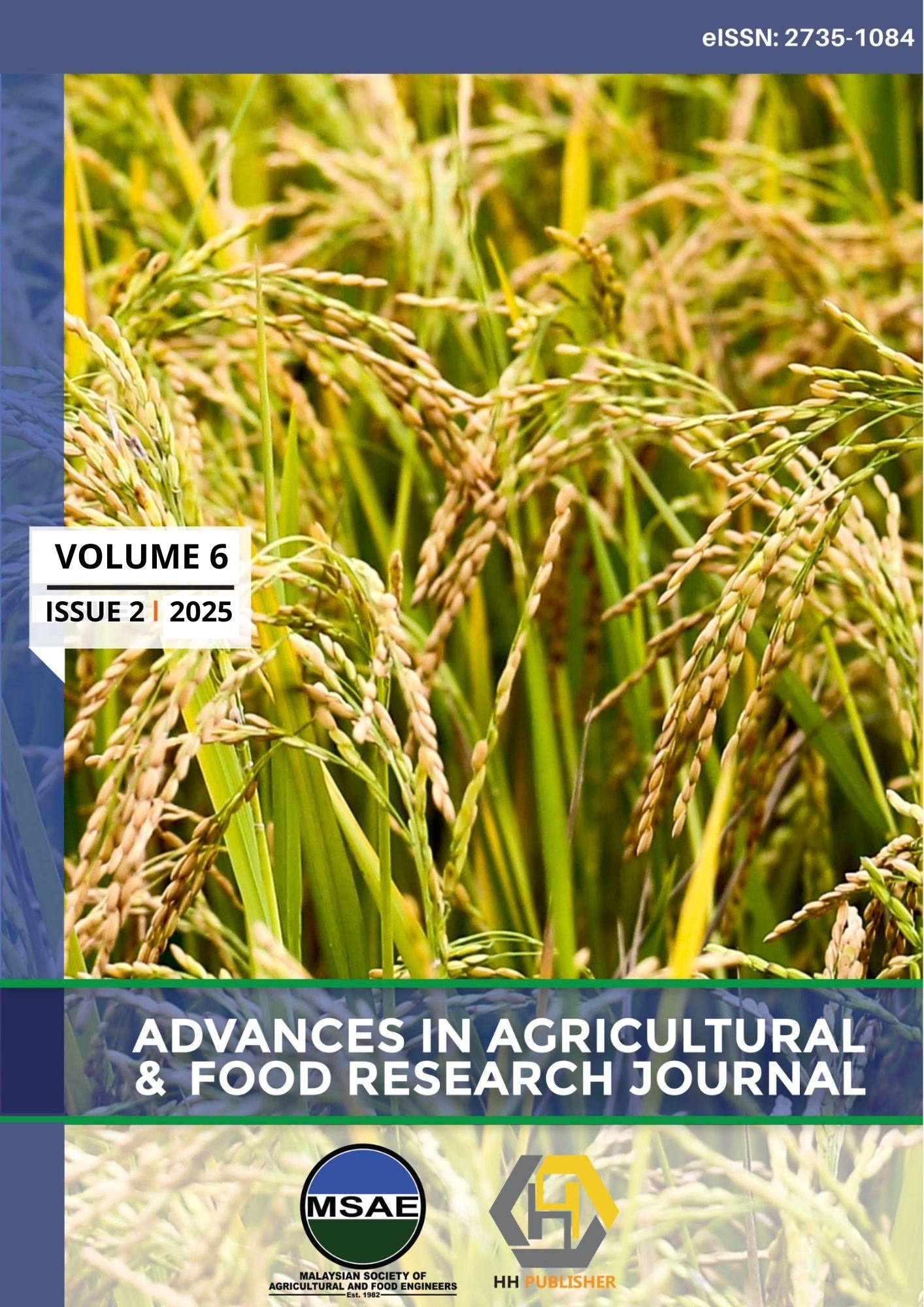Unveiling Contamination Issues and Experimental Realities in Testing Industry-Proposed Electrolysed Water Treatment for Jackfruit Bulbs Preservation
DOI:
https://doi.org/10.36877/aafrj.a0000575Abstract
This study investigates the efficacy and challenges of applying acidic electrolysed water (AEW) and slightly acidic electrolysed water (SAEW) for the microbial control and preservation of jackfruit bulbs. The experiment aimed to evaluate the industry-proposed electrolysed water treatment procedures for reducing microbial activity while maintaining the quality attributes of jackfruit bulbs, such as colour, texture, total soluble solids (TSS), pH, and weight. A batch electrolysis unit was used to generate AEW and SAEW, but inconsistencies in the physicochemical properties of SAEW, including lower oxidation-reduction potential (ORP), suggested an unsuccessful generation process. Microbial analysis revealed unexpectedly high microbial counts in treated samples, surpassing those of untreated samples, highlighting contamination issues during treatment. Observed challenges included insufficient drying time, short treatment duration, and cross-contamination during the large-scale process. Quality analysis revealed that the treated jackfruit bulbs experienced significant changes in colour and firmness, potentially linked to microbial growth. Water activity and TSS showed minimal variation, but a high initial water activity provided a conducive environment for microbial proliferation. While AEW demonstrated some promise in reducing microbial activity during preliminary trials, the results of this study underscore the need for refined treatment protocols and robust contamination control measures. Recommendations include optimising electrolysis conditions, extending treatment duration, and ensuring stringent hygienic practices during sample preparation and treatment. This research highlights critical gaps in the industry-proposed procedures and provides insights for improving the application of electrolysed water in postharvest treatment of fresh-cut fruits. Future studies should focus on replicating experiments under controlled environments to validate findings and overcome identified limitations.
Downloads
Published
How to Cite
Issue
Section
License
Copyright (c) 2025 Guan Chen Keng, Muhammad Zafrulhafiz Zaili, Nurul Shaqirah Sulaiman, Nurul Izzah Khalid, Norashikin Ab Aziz

This work is licensed under a Creative Commons Attribution-NonCommercial 4.0 International License.
Author(s) shall retain the copyright of their work and grant the Journal/Publisher right for the first publication with the work simultaneously licensed under:
Creative Commons Attribution-NonCommercial 4.0 International (CC BY-NC 4.0). This license allows for the copying, distribution and transmission of the work, provided the correct attribution of the original creator is stated. Adaptation and remixing are also permitted.

This broad license intends to facilitate free access to, as well as the unrestricted reuse of, original works of all types for non-commercial purposes.
The author(s) permits HH Publisher to publish this article that has not been submitted elsewhere.

.png)

.jpg)



